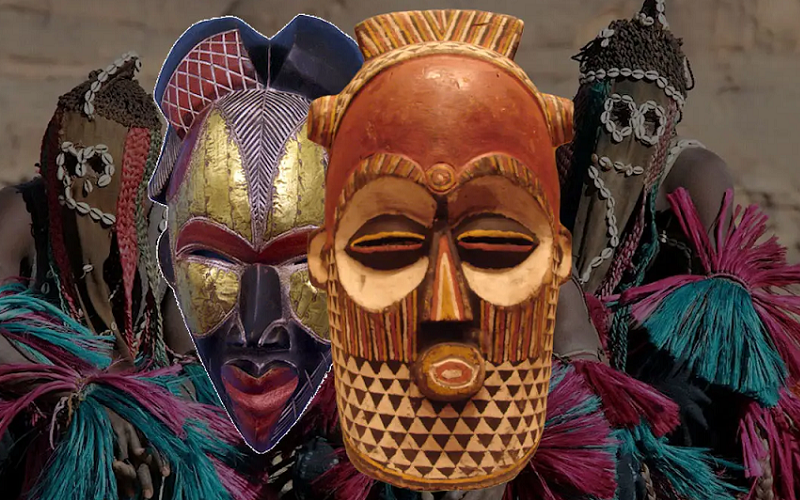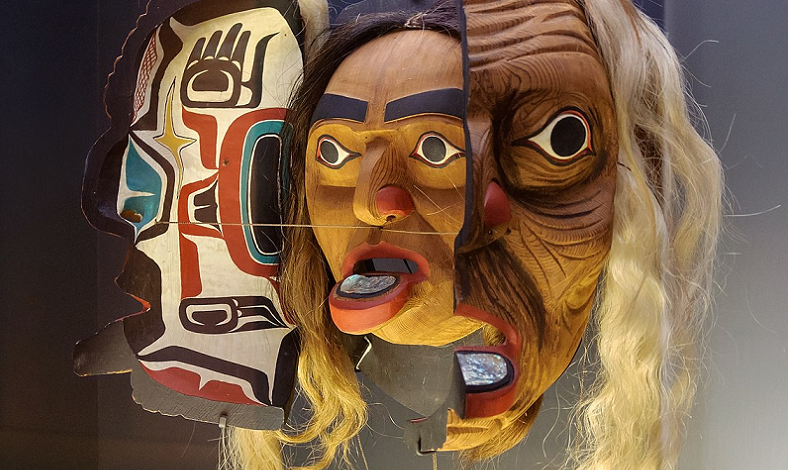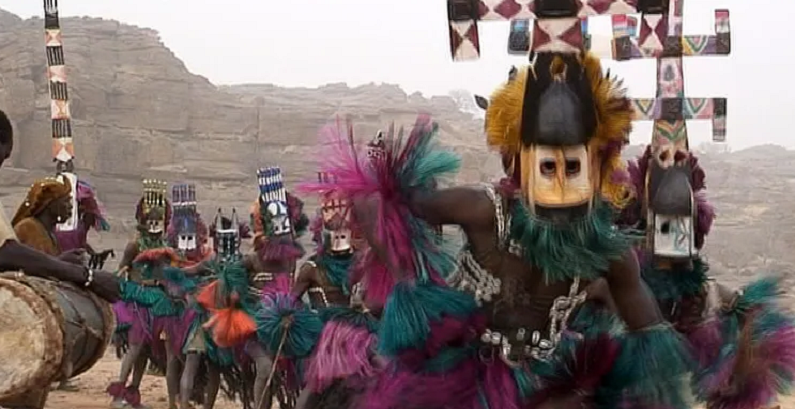
For centuries, ceremonial masks have graced the faces of individuals across cultures, playing pivotal roles in rituals, dances, and sacred ceremonies. But behind these intricate and often captivating facades lies an untapped world of cognitive intrigue. How do these masks, deeply rooted in tradition and symbolism, interact with the intricate workings of our brain? Can a piece of carved wood or painted clay truly influence our perception, emotions, and even our consciousness?
Contents
Introduction to Ceremonial Masks and Cognition
Ceremonial masks have, for centuries, been more than mere artifacts or tools for rituals. They bridge the tangible with the intangible, connecting individuals with deities, spirits, and deeper aspects of the psyche. As you find these masks adorning the walls of museums or being used in age-old ceremonies across the globe, one can’t help but ponder: What do these masks do to the human mind? How do they influence our brain, cognition, and perception?
Brief Overview of Ceremonial Masks
Masks are as diverse as the cultures they come from. From the intricate burial masks of ancient Egypt to the vibrant masks of Native American sun dances, they’ve been a consistent yet varied part of human history.
Historical and Cultural Significance
Masks serve as repositories of history, bearing witness to the beliefs, myths, and narratives of various cultures. They capture moments, stories, and personas, becoming a silent testament to the ebb and flow of civilizations.
Their Use in Various Traditions
Beyond their ornamental appeal, masks play functional roles. They become an integral part of initiation rites, war dances, harvest celebrations, and more. Each mask, unique in design and purpose, facilitates a specific interaction between the wearer and the world.
Ceremonial Masks Connection to Brain Function
But these artifacts aren’t just cultural or historical relics. They’re conduits, influencing the way our brain processes information, recognizes patterns, and experiences emotions.
Introduction to the Influence on Cognition
When one dons a mask, there’s more than just a physical barrier being put on; there’s a cognitive transformation. The world is perceived differently, and the brain adjusts to this new “face,” often in ways we’re not immediately conscious of.
Why it’s an Unseen Influence
The interplay between masks and the mind remains largely unexplored, lurking in the shadows of neuroscience and anthropology. This is what we refer to as the “unseen influence.” While the mask can be touched and seen, its effects on the neural pathways, perception, and cognition are profound yet subtle, making them fascinating to unravel [1].

The Historical Use of Ceremonial Masks
The tapestry of human history is richly embroidered with tales of ceremonial masks, each thread representing a different culture, a different story, and a unique purpose. To understand the profound influence of these masks on brain function, one must first journey through time, exploring their origins and the roles they played in ancient societies.
Ancient Civilizations
Civilizations across epochs and geographies have recognized the potency of masks. While the designs, materials, and methods have evolved, the essence of masks—as tools of transformation, protection, and communication—has remained consistent.
Egypt
The grandeur of ancient Egypt is perhaps best exemplified by its burial masks. These weren’t just ornate coverings for the deceased; they were believed to grant the wearer safe passage into the afterlife. The most iconic of these is the golden death mask of Tutankhamun. Made of gold and adorned with precious stones, this mask was not only a testament to the craftsmanship of the time but also an embodiment of the belief that the deceased pharaoh would rise again as a god. By donning such masks, the boundary between the mortal and the divine was blurred in the mind, enabling a transcendental experience.
Native American Tribes
Across the expansive terrains of North America, various indigenous tribes have used masks for both ritualistic and communal purposes. For instance, the Kwakwaka’wakw tribes of the Pacific Northwest held transformative potlatch ceremonies where masks represented ancestral spirits, animals, or natural elements. These masks were more than just wearables; they were animate beings. When a dancer wore one, they weren’t just representing a spirit; they were believed to become it, showcasing the powerful psychological shift induced by the mask [2].
African Tribes
Africa, with its rich diversity of tribes, offers a kaleidoscope of masks, each telling a unique story. From the geometrically intriguing Dogon masks of Mali to the vibrant Zulu masks of South Africa, these creations served various purposes. Some were used in rites of passage ceremonies, others in ancestral worship, and some even to communicate with spirits during tribal dances. Wearing these masks often meant a departure from one’s identity, embracing a communal or divine persona for a transient period.
Purpose and Meaning Behind the Masks
The masks, though diverse in appearance, shared common threads of purpose and symbolism across civilizations.
Ritualistic Uses
At the core, many masks were ritualistic tools. They were gateways, allowing wearers to connect with deities, ancestors, or nature. Whether it was an initiation ceremony, a fertility rite, or a harvest festival, masks elevated the mundane to the mystical, allowing participants to touch the intangible.
Communicating with Deities
In many cultures, masks were seen as channels to communicate with gods or spirits. They weren’t just symbolic; they were functional, bridging the earthly realm with the ethereal. By masking oneself, an individual could, even if temporarily, step into the shoes of a deity, channeling their power and wisdom.
Transitioning Between Life Phases
Life is punctuated by transitions—birth, adolescence, adulthood, and death. Many cultures used masks to mark and celebrate these phases. For instance, in certain African tribes, young men would wear masks as they transitioned into adulthood, signifying their new roles and responsibilities in the community.

The Science Behind Masks and the Brain
While the historical and cultural significance of masks is evident, the scientific realm provides a different lens through which to view their influence. By merging the worlds of anthropology and neuroscience, we begin to see the intricate dance of masks with the human brain. How do these age-old artifacts, steeped in tradition and symbolism, interact with the neural pathways and cognitive processes within our minds?
Perception and Recognition
One of the fundamental aspects of human cognition is the ability to perceive and recognize. Faces, in particular, are pivotal to our social interactions, our understanding of emotions, and even our survival instincts. But what happens when that face is hidden or transformed by a mask?
Facial Recognition Capabilities
The human brain is adept at facial recognition, so much so that there’s a region specifically dedicated to this task: the fusiform face area (FFA). From a young age, we become experts at deciphering minute facial details to recognize emotions, intentions, and identities. Masks, however, challenge this innate ability. By altering or concealing facial features, masks force the brain to adapt and reconfigure its usual processing routes [3].
How Masks Interrupt Normal Processing
When confronted with a masked face, the brain’s default recognition patterns are disrupted. Instead of the familiar cues—like the curve of a smile or the arch of an eyebrow—the brain encounters unfamiliar terrain. This can lead to a sense of unease or heightened alertness as the brain works overtime to glean meaning from the obscured or altered features.
Emotional Resonance and Empathy
Beyond mere recognition, faces are mirrors to emotions, and our brains are finely tuned to resonate with these emotional cues. Masks, with their capacity to conceal or exaggerate, play a fascinating role in this emotional dance.
Mirroring Emotions
Mirror neurons in our brain allow us to feel a semblance of what others are feeling, simply by observing them—a phenomenon central to empathy. When faces are masked, these mirror neurons may either be deprived of the usual stimuli or be presented with exaggerated, theatrical emotions, depending on the design and intent of the mask. This can either dampen our empathic response or amplify it, reshaping our emotional interactions.
Understanding Unspoken Feelings
Masks, especially in ceremonial contexts, often symbolize specific emotions or states of being. For instance, a mask representing sorrow in a ritual might feature exaggerated tears or a downturned mouth. Even if the wearer isn’t personally sad, the mask projects that emotion, compelling observers’ brains to tune into that specific emotional frequency [5].
Altered States of Consciousness
One of the most profound influences of masks is their ability to induce altered states of consciousness, especially when combined with other elements like dance, music, or ritualistic practices.
Rituals, Dance, and the Brain
When masks are worn during rituals or dances, participants often report entering trance-like states or feeling a deep connection with the divine or the spirit world. Neuroscientific studies suggest that rhythmic movements, combined with the sensory deprivation or alteration from wearing masks, can influence brain wave patterns, leading to altered states of awareness or consciousness.
Masks as a Catalyst for Trance States
Certain masks, with their designs, materials, and the rituals surrounding them, are specifically intended to induce trance. In these states, the boundaries between the self and the environment blur, and the brain experiences a sense of oneness or transcendence. These states, often described as spiritual or mystical, hint at the mask’s power to influence not just cognitive functions but also deeper, more primal brain processes.
Psychological Impact of Mask Wearing
Beyond the neural intricacies and brain functions, there lies another dimension to the mask’s influence: the realm of psychology. Wearing a mask isn’t just a physiological experience; it’s a psychological journey. As one adorns a mask, a complex web of emotions, perceptions, and behaviors begin to unravel, shaping not just the wearer’s experience but also that of the onlookers.
Identity and the Self
At the heart of our psychological experience is our sense of identity. Masks, in their transformative nature, play a profound role in shaping, concealing, or amplifying this sense of self.
Anonymity and Liberation
One of the primary feelings that masks can provide is a sense of anonymity. Freed from the usual constraints of identity, individuals might feel emboldened to act in ways they wouldn’t ordinarily. This sense of liberation can be empowering, allowing wearers to express suppressed emotions or adopt entirely new personas.
Dissociation and Role-playing
With the mask acting as a barrier between the self and the external world, wearers can sometimes experience dissociation. They might feel detached from their usual selves, immersing fully into the character or spirit the mask represents. This role-playing can be therapeutic, granting a break from the mundane or the stressful, but it can also challenge one’s core sense of self if not contextualized properly [5].
Social Interactions and Behavior
Masks don’t just influence the individual wearing them; they reshape social dynamics, altering interactions and behavioral patterns.
Authority and Power Dynamics
Certain masks, especially those used in ceremonies or hierarchical structures, carry with them a sense of authority. They can elevate the wearer’s status, demanding respect or obedience from onlookers. This shift in power dynamics, even if temporary, can deeply impact interpersonal interactions and group behaviors.
Empathy and Connection
As discussed earlier, masks can hinder or alter the empathic connections we form based on facial cues. In a psychological context, this might mean that wearers feel less understood or less in tune with their surroundings. On the flip side, shared mask-wearing, as seen in collective rituals, can foster a sense of unity and connection, as participants jointly navigate the masked experience.
Therapeutic Uses of Masks
Recognizing the profound psychological impacts of masks, modern therapy has found innovative ways to incorporate them.
Mask-making in Art Therapy
Art therapy often employs mask-making as a tool for self-expression and introspection. Patients are encouraged to create masks that represent different facets of their personalities, emotions, or experiences. This tactile and creative process provides a safe medium to confront and express complex feelings.
Role-playing in Psychotherapy
Masks can be used in psychotherapy sessions to facilitate role-playing, allowing patients to explore different perspectives, confront personal conflicts, or practice coping mechanisms. By stepping into another’s shoes, even if symbolically, individuals can gain insights into their own psyche and interpersonal dynamics.
References
[1] Six Reasons Why Humans Wear Masks
[2] The meanings of masks
[3] Spirit Faces
[4] The functions and forms of masks
[5] Bali’s elaborate masks offer a connection to the gods

